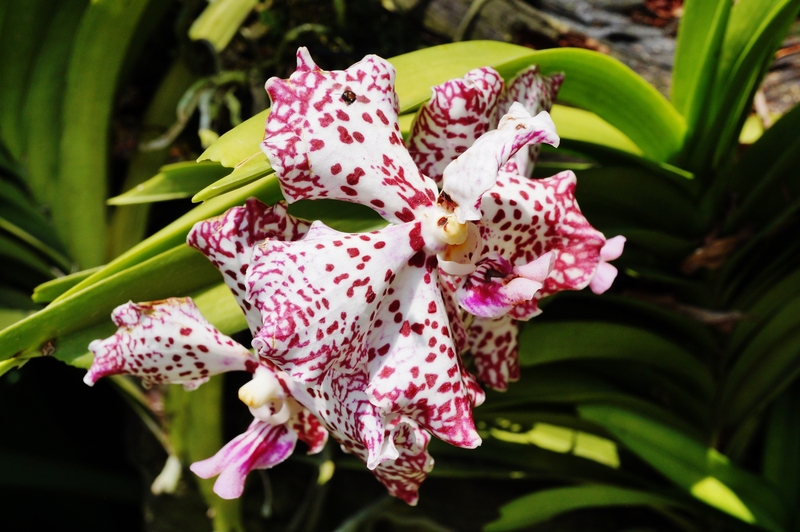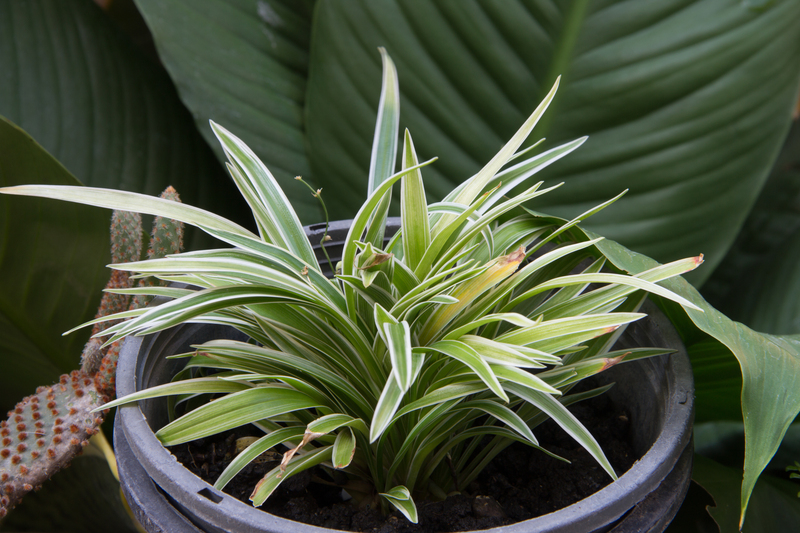Winter is Here: Strategies to Keep Your Plants Safe
Posted on 30/06/2025
Winter is Here: Strategies to Keep Your Plants Safe
As the colder months set in, winter plant protection becomes essential for ensuring your garden survives and thrives until spring. Whether you're a devoted gardener or a houseplant enthusiast, knowing how to safeguard plants from frost, snow, and bitter winds is crucial for your green investments. Below, we discuss robust and effective strategies to keep your plants safe during winter, from outdoor perennials to tender indoor varieties.
Why Do Plants Need Winter Protection?
Some plants have evolved to weather the chill, but many common garden plants are vulnerable to cold stress. Harsh winter weather can cause:
- Cellular damage due to freezing temperatures
- Desiccation from dry winds
- Stem splitting on trees and shrubs
- Root injury in poorly-insulated soil
- Broken branches from heavy snow or ice accumulations
Understanding your local USDA Plant Hardiness Zone helps you recognize which plants may need extra help surviving the season.

Assessing Plant Vulnerability
Not every plant in your garden requires the same level of care in winter. Analyze your green space based on these factors:
- Species hardiness: Some plants (like peonies and tulips) naturally survive deep freezes, but tropical plants need special attention.
- Plant maturity: Young plants or recently transplanted specimens are often less resilient.
- Placement and microclimates: Raised beds, pots, and exposed areas face harsher conditions than protected garden spots.
*Tip: Make a garden map to note areas most at risk!*
Essential Winter Plant Care Strategies
Being proactive is the best way to ensure your garden emerges healthy in spring. Here are comprehensive strategies to keep your plants safe in winter:
Mulching: Nature's Insulation
Mulching is a top technique for winter plant protection. Mulch adds a natural barrier between delicate roots and harsh outdoor conditions, which can:
- Regulate soil temperature and prevent rapid freeze-thaw cycles
- Maintain soil moisture and prevent dehydration
- Suppress winter weeds that might compete for nutrients
Organic mulches such as shredded leaves, straw, pine needles, or wood chips are best. Apply a generous 2-4 inch layer around the root zone--taking care not to mound against stems or trunks, which can invite rot.
Covering and Wrapping: Extra Layers for Delicate Plants
When sudden cold snaps threaten, physical barriers can be lifesaving for tender plants:
- Garden blankets (frost cloths): Lightweight, breathable covers that shield from chill without smothering plants
- Burlap wraps: Ideal for evergreens and shrubs; wrap loosely to shield from windburn
- Plastic domes or mini-greenhouses: Useful for pots and small beds--ensure ventilation to prevent overheating on sunny winter days
- Old sheets or towels: Great for last-minute frost warnings (just remove coverings in the morning!)
*Never use plastic directly on foliage*--it can trap moisture and worsen freeze damage.
Watering Wisely
Moisture management is a lesser-known but important part of winter plant care. Well-hydrated plants are more resilient to freeze stress.
- Water deeply before ground freezes--wet soil holds warmth better than dry soil.
- Avoid waterlogging--over-saturated roots are susceptible to rot.
- Pay special attention to evergreens, which lose moisture through their needles or leaves all winter.
*Tip: Water earlier in the day to avoid creating ice at the soil's surface overnight*.
Protecting Potted and Container Plants
Container plants are much more vulnerable than those in the ground. Use these strategies to protect potted plants in winter:
- Move pots close to the house, into a garage, or under a shelter for extra warmth.
- Wrap containers with bubble wrap, burlap, or garden fleece for insulation.
- Cluster pots together for shared warmth, and elevate them off the ground to prevent freezing from below.
If you have tender houseplants outdoors, always bring them inside before the first frost.
Managing Snow and Ice
Heavy snow and ice can break branches and crush fragile plants. Here's how to protect your plants from winter precipitation:
- Brush snow off gently with a broom after each storm--don't shake or tug, as frozen branches can snap.
- Prune weak or damaged limbs in fall to reduce breakage risks before winter begins.
- Avoid de-icers near plant beds; salt and some chemicals can harm roots or foliage.
Establishing Windbreaks
Winter winds can cause desiccation (drying out), especially in broadleaf evergreens and delicate shrubs. You can minimize wind damage by:
- Planting hedgerows, fences, or strategic shrub groupings on the windward side of your garden.
- Using burlap screens or snow fences for temporary windbreaks.
Protecting your plants from winter wind helps prevent brown, dry foliage and dieback in spring.
Special Considerations for Different Plant Types
Evergreens
Evergreen trees and shrubs are active all winter, losing moisture through their needles or leaves. They need:
- Extra mulching over root zones
- Thorough watering before ground freeze
- Burlap wrap for exposed branches on windy sites
Perennials & Bulbs
Most cold-hardy perennials and bulbs go dormant and survive underground. Help them with:
- A deep mulch layer (remove gradually in spring to prevent rot)
- Marking bed locations with stakes so you don't accidentally disturb them during winter chores
Fruit Trees & Flowering Shrubs
These plants can suffer winter sunscald and frost cracks. Protection tips:
- Wrap trunks with tree guards or use white latex paint to reflect intense winter sun
- Mulch to protect shallow roots from freezing and thawing
- Prune only damaged or dead branches; leave major pruning for late winter/early spring
Tender and Tropical Plants
Tropical and sub-tropical plants (like cannas, dahlias, or hibiscus) need special treatment:
- Dig up bulbs, tubers, or rhizomes and store them in a dry, cool, frost-free spot
- Bring potted tropicals indoors before frost hits
- Keep them in a bright spot, reduce watering, and monitor for pests
*Tip: Label stored bulbs clearly for an easy spring replanting!*
Indoor Plant Care During Winter
Don't forget your indoor greenery! Changes in light, temperature, and humidity can stress houseplants during winter:
- Move plants to brighter spots as sunlight fades (southern windows are best)
- Rotate plants weekly for even light access
- Reduce watering: Growth slows in winter, so less water and fertilizer are needed. Overwatering leads to rot.
- Increase humidity: Use a tray of pebbles and water, a small humidifier, or group plants together.
*Watch for dry leaf tips or brown edges, which indicate low indoor humidity.*
Common Winter Plant Problems and Solutions
- Wilting or blackened leaves: Usually frost damage. Cut away damaged areas and protect against future cold snaps with covers.
- Mushy roots or stems: A sign of rot from overwatering or poor drainage. Improve drainage, water less, and remove affected plant material.
- Brown patches on evergreens: Indicative of winter desiccation. Water deeply in autumn and protect with burlap or windbreaks.
- Broken branches: Prune cleanly below the damage and support remaining limbs as needed.
Long-Term Strategies: Planning Your Winter-Resilient Garden
If you frequently battle extreme winters, consider these garden design tactics:
- Choose plants native or adapted to your climate zone
- Mix evergreens, deciduous, and herbaceous species for year-round interest
- Use hardscape features (walls, boulders) for shelter and retained heat
- Site delicate plants in naturally protected microclimates (south or east sides of buildings)
- Install permanent windbreaks and winter interest plantings
Investing in the right plants and design saves time and effort in winterization every year!

Frequently Asked Questions About Winter Plant Protection
Should I cut back all perennials in fall?
Not always. Leave some stems and foliage in place as insulation for the crown and to provide habitat for beneficial insects like ladybugs. Cut back in early spring when new growth appears.
Can I use straw or hay for winter mulch?
Straw is ideal; hay can introduce weed seeds. Always use straw if possible, and supplement with leaf mulch, pine needles, or bark chips for added protection.
Is it too late to protect my plants in early winter?
No--better late than never! Add mulch, cover plants, and water deeply even after light freezes, but avoid disturbing roots if the soil is already frozen solid.
Conclusion: Keep Your Plants Safe All Winter Long
As the cold takes hold, a thoughtful approach to winter plant safety will reward you with healthier, more beautiful plants come spring. From mulching and covering to managing moisture and understanding your plants' unique needs, use these strategies to ensure your garden weathers winter's harshest tests.
Remember: Vigilance, preparation, and a little extra care can make all the difference between losing your precious plants and enjoying a thriving landscape when warmer days return.
Don't let winter take your garden by surprise--start protecting your plants now for lush, happy growth all year long!
```
